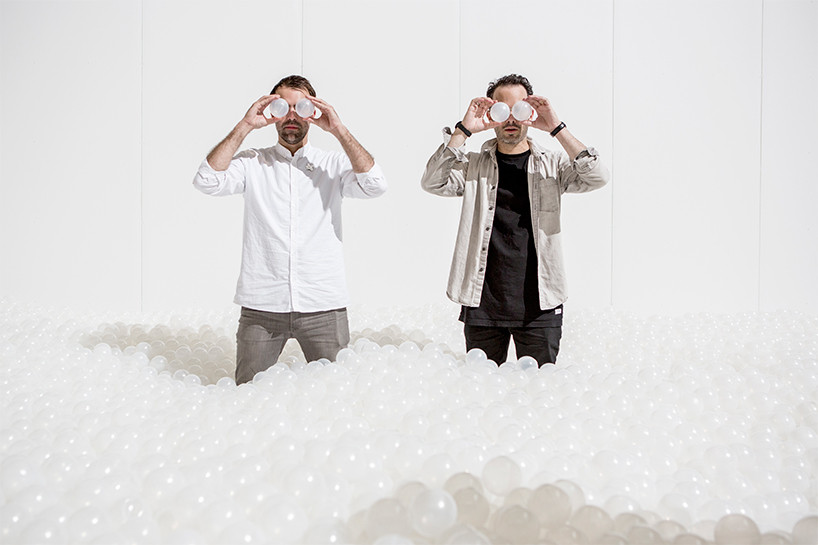The National Building Museum in Washington, DC, has become host to THE BEACH, an installation that emulates a natural landscape while flying in the face of museum tradition. The oddly commercialized, sleek shoreline is a vaguely humorous, somewhat subversive take on multiple modes of summer leisure.
The show, running until September 7th, 2015, is getting most of its press for the inclusion of a 10,000 square-foot ball pit, composed of almost one million recyclable plastic balls in a uniform translucent white. At the end of this ball pit “ocean” is a wall of mirrors that play the role of a distant horizon, providing the illusion that the ocean goes on forever.
Creators Daniel Ashram and Alex Mustonen are the duo behind the Brooklyn-based design collective Snarkitechture. THE BEACH seems perfectly in keeping with the firm’s usual style. Frequently ustilizing stark white objects and often addressing themes of consumerist and design-oriented society, the team specializes in large installations, innovative interior designs, and art projects with a slightly subversive, humorous edge.
THE BEACH is an interesting addition to any museum space, encouraging guests to sit in chairs and idle on its shores, eat organic, fair-trade snacks from the included Union Kitchen snack bar, and to “swim” in the ball pit. All these activities seem to exist in a place of passive opposition to the traditions of a museum, where food is forbidden, guests glance at paintings and sculptures for a few seconds before moving on, and where touching any artwork is strictly forbidden.
It might not be a germ-a-phobe’s paradise, though the museum assures visitors that all of the balls in the pit are molded with anti-microbial agents, as well as being sprayed with anti-microbials and cleaned nightly. The average person should leave the BEACH with their health, but good luck if your phone happens to fall out of your pocket while you swim toward the mirrored horizon.
What is clear is that while the exhibition has been on, the National Building Museum has reported a threefold increase in the number of visitors it’s welcomed during its summer season. Is this sort of interactivity the answer to revitalizing the museum experience? We’ll have to wait and see as more and more artists begin to experiment with the medium.
By Dallas Jeffs
